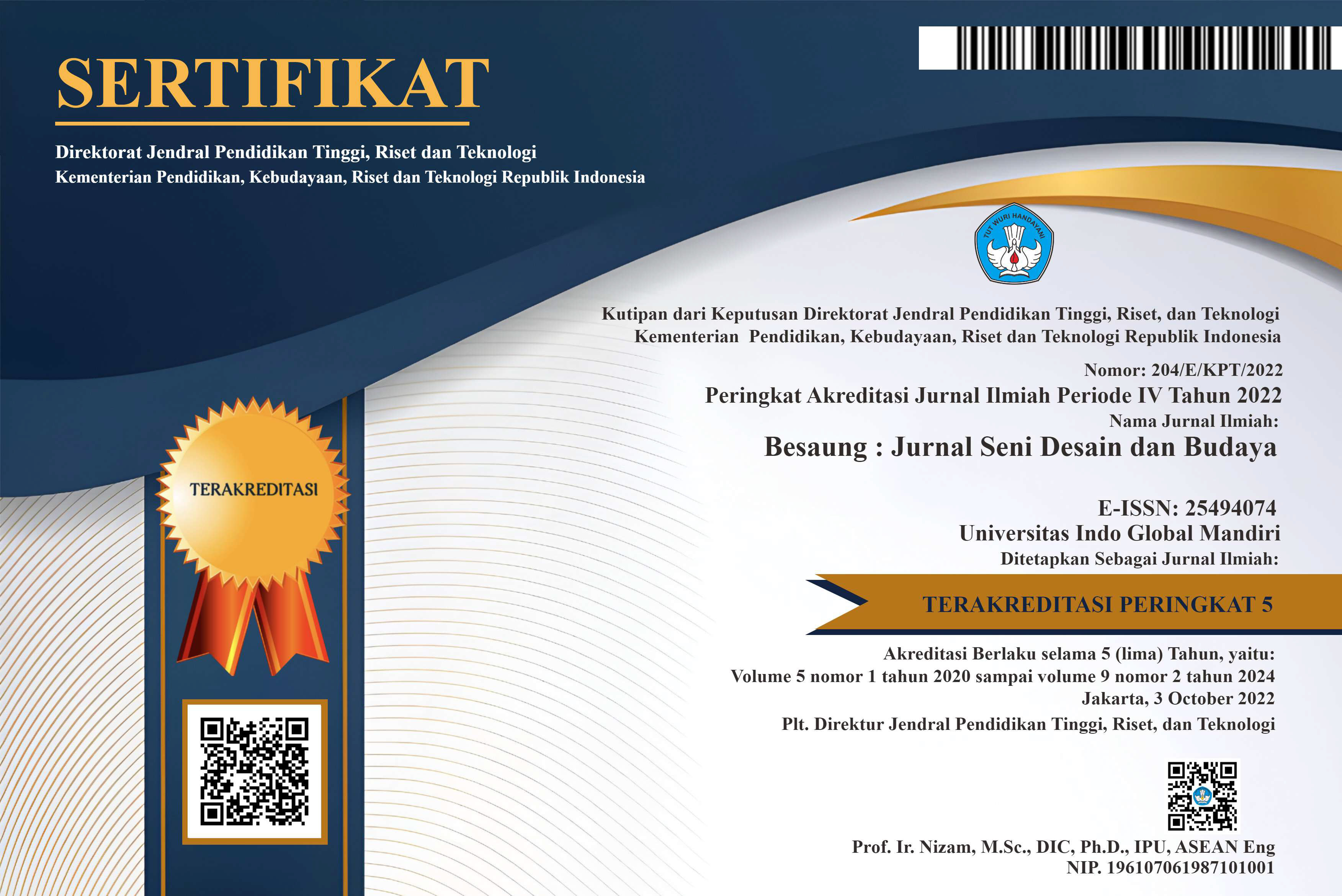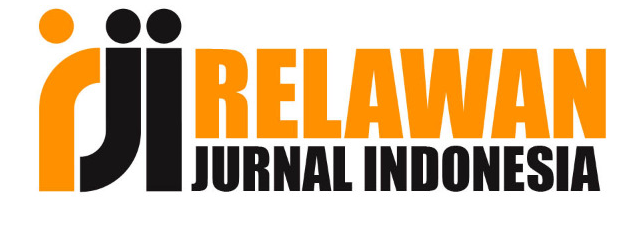KAJIAN ESTETIKA ORNAMEN RUMAH LAHEIK DESA SELEMAN KABUPATEN KERINCI - JAMBI
DOI:
https://doi.org/10.36982/jsdb.v1i1.121Abstract
Humans are creatures of culture all upload their work to give effect to the environment around it. The realization of these activities give shape and structure in accordance with the new physical and spiritual needs. Man in her life has always had a passion for beauty. The beauty desire tertuangkan one of them in the form of ornaments. this can be seen from the activity Kerinci ancestors who already know how to decorate a decorative ornament in the form contained in laheik house in the village of SelemanKab. Kerinci-Jambi. Humans in general are always exploit and use ornaments as will efforts to realize the beauty of its objects. Human activities in the use of ornaments can be seen from the objects left behind as nekara, vessel, traditional house, Rumaharrayand so forth. All of it is a form of visual created by the use of motifs as the added value of the beauty of the object. The process of creation can not be separated from the influence of the surrounding natural environment that has changed the shape of the original.Study ornament array house in which there are two fundamental elements that shape and structure. Visual form of ornaments Home Village arraySeleman many refer to the surrounding nature, for example the plants and animals that distilisasikan the motive or ornaments. array house ornament in its creation can not be separated from the principles of harmony, balance, rhythm and so forth. ornaments presence in the House array has two functions namely as aesthetic and as a symbolic expression and way of life for the people of Kerinci. Symbols are present on the ornament is a convention on a community agreement.
 Keywords : Ornament, Symbol, Functions, laheik house
References
Alipuddin, 2010, “Ornamen Mesjid Keramat Koto TuoPulau Tengah Kerinci Jambi, Pertautan Teksdan Konteksâ€, Tesis, Padang panjang: Pascasarjana ISI Padangpanjang.
Djakfar Idris dan Idris Indra, 2001, Seri Sejarah Kerinci I Menguak Tabir Prasejarah di Alam Kerinci, Sungai Penuh: Pemerintah Kabupaten Kerinci.
Djelantik, A. A. M, 1998, Estetika Sebuah Pengantar Bandung : Masyarakat Seni Pertunjukan Indonesia.
Feldman, Edmund Burke, 1967,Art As Image and Idea,terjemahan Sp, Gustami. 1996. Seni Sebagai Ujuddan Gagasan, Yogyakarta : BP ISI Yogyakarta.
Gustami, Sp, 2007, Butir-butir Mutiara Estetika Timur, Ide DasarPenciptaanSeniKriya Indonesia, Yogyakarta: Prasista.
Kartika Sony, Dharsono, 2007, Estetika, Bandung: Rekayasa Sains.
Kartika Sony, Dharsono, 2007, Kritik Seni, Bandung: Rekayasa sains.
Koentjaraningrat, 1990, Kebudayaan, Mentalitas, dan Pembangunan, Jakarta: Gramedia.
Sachari, Agus, 2002, “Estetika Makna, Simbol dan Dayaâ€, Bandung: InstitutTeknologi Bandung.
Sahman, Humar, 1993, Mengenali Dunia Seni Rupa, Semarang: IKIP Semarang Press.
Salim, Peter dan Salim 1991, Yenny, Kamus Bahasa Indonesia Kontemporer, Jakarta : modren english press.
Soedarso, Sp, 2000, Sejarah Perkembangan Seni Rupa Modern, Jakarta: Studio Delapan Puluh Enterprise.
Soekmono, R, 1973, Pengantar Sejarah Kebudayaan Indonesia 1, Yogyakarta: Kanisius
Suardana, I Wayan, 2009, Ornamen Dalam Penciptaan Seni Kriya: Era Modren dan Pos modrenâ€, dalam Sri Krisnanto dkk., ed., Seni Kriya dan Kearifan Lokal Dalam Lintasan Ruang danWaktu. Yogyakarta: ISI Yogyakarta.
Susanto, Mikke, 2011, Diksi Rupa Kumpulan Istilah dan Gerakan Seni Rupa, Yogyakarta: Dicti Art Lab Yogyakarta dan Jagad Art Space, Bali.
Downloads
Published
Issue
Section
License
This work is licensed under a Creative Commons Attribution-NonCommercial-ShareAlike 4.0 International License.













